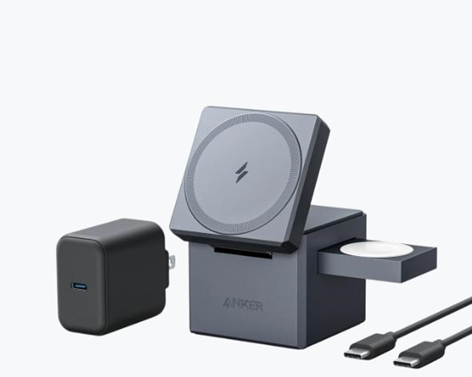Optic nerve
Overview
Theopticnerveisthenervefiberoftheretina.Startingfromtheganglioncellsoftheretina,thenervefibersreachtheblindspotandthenpassthroughtheethmoidlayerofthescleratobecometheopticnerve.Theopticnerveisthesecondpairofcranialnerves,belongingtosensorynerves.Ittravelsposteriorlyintheorbit,passesthroughtheopticnerveforamenattheorbitaltip,entersthemiddlecranialfossa,andentersthebrainthroughtheopticchiasmandoptictract.Theopticnerveiscoveredbyduramater,arachnoidandpapilla.Thespacebetweentheduraandthearachnoidisthesubduralspace;betweenthearachnoidandthepapillaisthesubarachnoidspace,whichcontainscerebrospinalfluid.Thethreelayersofmembranesarethecontinuumofthemeninges.Thepiaistightlyattachedtotheopticnerve.Theprotrudingconnectivetissuetrabeculaeandtheglialcellsintheopticnervetogetherformtheseptum,dividingtheopticnerveintomanynervefiberbundles.Onthecentralaxisoftheopticnerve,therearecentralarteriesandcentralveins.Inthecentralseptum,therearecapillaries.Thefunctionoftheopticnerveismainlytotransmitvisualimpulses.
Anatomy
Theopticnerveisapartofthecentralnervoussystem.Thevisualinformationfromtheretinaistransmittedtothebrainviatheopticnerve.Theopticnervereferstothenervefromtheopticdisctotheanteriorangleoftheopticchiasm,withatotallengthofabout42~47mm.Itisdividedintofourparts:intraocularsegment,1mmlong;intraorbitalsegment,25-30mmlong;intracanalsegment,4-10mmlong;intracranialsegment,10mmlong.Theopticnerve(n.opticus)isaspecialsomatosensorynervethatconductsvisualimpulses,anditsfibersstartfromtheganglioncellsoftheretina.Theaxonsofganglioncellsmergeintotheopticnervediscatthebackoftheretinaandpassthroughthescleratoformtheopticnerve.Theopticnervetravelsposteriorlyintheorbit,entersthemiddlecranialfossathroughtheopticcanal,connectstotheopticchiasm,andthenstopsatthelateralgeniculatebodythroughtheoptictracttoconductvisualimpulses.Theouterbreadoftheopticnervehasthreelayersofmembranes,whicharecontinuouswiththecorrespondingthreelayersofmeninges.Therefore,thesubarachnoidspacealsoextendstotheperipheryoftheopticnerve,sowhentheintracranialpressureincreases,theopticdisc(opticalnervehead)edemaoftenoccurs.
Itiscomposedofaxonsofretinalganglioncells.Afterstartingtheopticdisc,itpassesthroughthechoroidandsclerallaminatoexittheeyeball,andenterstheskullthroughtheopticcanaltotheanteriorangleoftheopticchiasm.Thetotallengthisabout42~47mm.Itcanbedividedintofourparts:intraballoon,intraorbital,intracanalandintracranial.
(1)Theinnersegmentoftheball:fromtheopticdisctothescleralchoroidaltube,includingtheopticdiscandthelamina,about1mminlength,istheonlypartoftheentirevisualpaththatcanbeseenwiththenakedeye.Nervefibershavenomyelinsheath,buttheyhavemyelinsheathafterpassingthroughthelamina.Becausetheopticnervefibersarehighlycrowdedwhentheypassthroughthelamina,disccongestionandedemaarepronetoappearclinically.
(2)Intraorbitalsegment:theorbitalpartfromtheeyeballtotheopticcanal.Thetotallengthisabout25-35mm,anditiscurvedinan"S"shapeintheorbittoensurethattheeyeballrotatesfreelyandisnotrestricted.
(3)Theinnersectionofthetube:thepartthatpassesthroughthebonyopticcanal.Itisabout6mmlong.Thissegmentoftheopticnerveisadjacenttothesphenoidsinusandtheposteriorethmoidsinus,andiscloselyrelated.Becauseitiscloselysurroundedbythebonetube,headtrauma,fractures,etc.cancauseseriousdamagetothissegmentoftheopticnerve,whichiscalledintra-tubeopticnerveinjury.
(4)Intracranialsegment:Thissegmentreferstothepartfromtheentranceofthecranialcavitytotheopticchiasm,about10mminlength.Themoretheopticnervesonbothsidesgoback,theclosertheyaretothecenter,andfinallyentertheleftandrightcornersofthefrontoftheopticchiasm.Theopticnerveiswrappedbyanervesheath,whichiscontinuedbythreelayersofmeninges(duramater,arachnoid,andpiamater).Thefrontendofthesubduralandsubarachnoidspaceistheblindend,whichendsbehindtheeyeball.Thecerebrospinalspaceisthesameasthebrainspacewiththesamename,anditisfilledwithcerebrospinalfluid.Clinically,increasedintracranialpressurecanoftencauseopticdiscedema,anddeeporbitalinfectionscanalsoinvolvethespacearoundtheopticnerveandspreadintotheskull.
Thebloodsupplyoftheopticnerve:theinnerpartoftheeye,thenervefiberlayeronthesurfaceoftheopticdisc,issuppliedbythecapillariesfromthecentralretinalartery,andthebloodsupplyoftheopticdisclaminaandfrontofthelaminaisfromtheposteriorciliaryThebranchsupplyoftheartery.Thereiscommunicationbetweenthetwo.TheZinn-Hallerringisananastomosisofthesmallbranchesoftheposteriorciliaryarteryinthescleraaroundtheopticdisc.Theintraorbital,intracanal,andintracranialsegmentsaresuppliedbyarteriesintheopticnerve,intracranialarteries,andpialvessels.
Compressiveopticnerve
Compressiveopticneuropathy(compressiveopticneuropathy)iscausedbydirectcompressionorinfiltrationofintraorbitalorintracranialtumorsormetastaticcancers.Itissometimeseasytobemisdiagnosedinclinicalpracticeandshouldbevigilant..
Introductiontolesions
Introduction
Opticalneuropathymainlyincludesopticneuritis,opticatrophy,ischemicopticdiscdisease,opticpapillaryedemaandotherdiseases.Itismorecommoninclinicalpractice,andmoredifficulttotreat,andthecauseismorecomplicated.Althoughitisadiseaseoftheopticnerveatthefundus,itiscloselyrelatedtotheentirebody.Manyfundusdiseasesdeveloponthebasisofsystemicdiseases."Neijing"says:"Theessenceofthefiveinternalorgansandsixfuorgansarefocusedontheeyesandbecomeessence."Contactwiththebodyasawhole.Amongthetwelvemeridiansandeightmeridiansofthehumanbody,thereare13whichusetheeyeareaasthepassingandstartingandclosingpointsrespectively.Therefore,theimbalanceofthevisceraandmeridianisthemainelementofthefundusandopticneuropathy.Suchdiseasescannotbetreatedwithsurgery,andmodernmedicinehasnospecialmethods.ThetraditionalChinesemedicinemethodwithinternaltreatmentasthemainmethodhasawiderangeofadaptability,especiallythetreatmentmethodwiththemainfeatureofsyndromedifferentiationandtreatment,whichhasitsgreatadvantages.

Thehumanbodyisacomplexmovementbody.Therearemanyformsofmovementinbothphysiologyandpathology.The"treatmentofthesamediseasewiththesamedisease"and"treatmentofthesamediseasewithdifferenttreatments"inChinesemedicinerefertopathologicalmovement.Form-based.Anypathologicalchangesindifferenttissuesandorganscanbetreatedwiththesamemethodaslongasthepathologicalmovementisthesame.Otherwise,differenttreatmentmethodsmustbeused.Sincetheopticnerveandretinaarehigh-levelnervetissues,whicharepartofthebrainthatextendsoutward,nutritionaldisordersaremostlikelytooccur,causingpathologicalchangessuchasnecrosisanddegenerationofcelltissues.Inthetreatmentofthesediseases,Westernmedicineoftenusesantibiotics,hormones,vitamins,andvasodilators.However,manypatientshavepoorefficacyorrecurrentattacks.TraditionalChinesemedicinetreatsbothsymptomsandrootcausesbystrengtheningthebodyandremovingevils.
Clinicalmanifestations
1.Visualdisturbanceisthemostcommonandmainclinicalmanifestation.Intheearlystage,thereareoftenpainandswellingintheposteriororbit,andblurredvision,andthenthesymptomsworsen.Visionissignificantlyreducedorlost.
2.Visualfielddefectscanbedividedintotwotypes:
a.Bitemporalhemianopia:Whenthefibersonbothsidesofthenervethatconducttothenasalretinalvisioncausedbytumorcompressionareinvolved,Cannotacceptbilaterallightstimulationandappearbilateralhemianopia.Whenthetumorgrowsup,onesideiscompletelyblindbecauseoftheweightononesideandthelossofvisualfunction,theothersideistemporalhemianopia,andfinallybothsidesarecompletelyblind.
b.Co-directionalhemianopia:Damagetotheoptictractorlateralgeniculatebodycancausevisualfielddefectsononesideofthenoseandtheothertemporalside,whichiscalledco-directionalhemianopia.Theopticbeamandthecentralhemianopiaaredifferent.Theformerisaccompaniedbythedisappearanceoflightreflection,whilethelatterhaslightreflection;theformerhascompletehemianopia,whilethelatterismostlyincompleteandpresentsquadranthemianopia;theformerhasmoresubjectivesymptomsthanthelatter,andthelatterhasmoreNoconscioussymptoms;thelatter'svisualacuityispreservedinthecenterofthevisualfield,showingmacularavoidance.
Differentialdiagnosis
I.Visionlossorloss
(1)Craniocerebralinjury(craniocerebralinjury)Whenskullbasefracturepassesthroughthesphenoidprocessorfracturefragmentstodamagetheinternalcarotidartery,internalcarotidartery-cavernousfistulacanoccur,whichismanifestedascontinuousmurmuroftheheadororbit,pulsatingexophthalmos,andrestrictedeyemovementAndprogressivelossofvision.Basedonaclearhistoryoftrauma,X-rayswithskullbasefracturesandcerebrovascularangiographyarenotdifficulttodiagnoseclinically.(2)Opticneuromyelitis(opticnearomyelitis)Theremaybeahistoryofupperrespiratorytractinfectionafewdaystotwoweeksbeforethedisease.Itcanstartwithocularsymptomsorspinalcordsymptoms,orbothcanoccuratthesametime.Usually,oneeyeisaffectedfirst,andafterafewhourstoafewweeks,theothereyealsodevelops.Visionlossgenerallyprogressesquickly,withacentraldarkspot,andoccasionallyprogressestoalmostcompleteblindness.Thediseaseoftheeyecanbepapillitisorretrobulbaropticneuritis.Iftheformerisabouttodeveloppapilledema,ifthelatterisnormal,thepapilledemawillappear.Symptomsofmyelitisappearaftertheeyesymptoms.Thefirstsymptomsaremostlybackpainorshoulderpain,whichradiatestotheupperarmorchest.Immediatelytherewasabnormalparesthesiainthelowerlimbsandabdomen,progressiveweaknessofthelowerlimbsandurinaryretention.Althoughthetendonreflexwasweakenedinitially,theplantarreflexwasstillbilaterallyextensible.Anesthesiaisabnormallyuptomid-thoracic.Peripheralwhitebloodcellsincreased,andtheerythrocytesedimentationrateincreasedslightly.
(3)Multiplesclerosis(multiplesclerosis)usuallyoccursbetweentheagesof20and40,andtheclinicalmanifestationsarevarious,andvisionlosscanbethefirstepisode,manifestedasmonocular(Sometimesvisionlossinbotheyes).Fundusexaminationshowedchangesinopticnervepapillitis.Cerebellarsign,pyramidaltractsign,andposteriorcorddysfunctionarecommon.Deephyperreflexia,disappearanceofshallowreflexes,andplantarreflexextension.Whenataxia,interarchingdisorder,andintentiontremorappearatthesametime,itconstitutestheso-calledcharcottriad.Theremissionandrecurrenceofthetypicalcourseofthisdiseasealternate.Evokedpotentials,CTorMRIcanfindsomedemyelinatinglesionsthathavenoclinicalmanifestations.Theimmunoglobulininthecerebrospinalfluidisincreased,andtheupperlimitofproteinquantificationisorslightlyhigher.
(4)Opticneuritis(opticneuritis)canbedividedintotwotypes:papillitisandretrobulbaropticneuritis.Themainmanifestationsarerapidvisionlossorblindness,eyepain,centraldarkspotsinthefieldofvision,dilatedphysiologicalblindspots,pupildilation,directlightreactiondisappears,andcross-photoreceptivereactionsarepresent,mostlyunilateral.Papillitishaschangesintheopticnipple,withunclearedges,redcolor,venousfillingortortuosity,theremaybesmallpatchesofbleeding,andtheopticnipplerisessignificantly.Papillitisisverysimilartopapillaryedema.Theformerhasthecharacteristicsofearlyrapidvisionloss,photophobia,eyeballpain,centraldarkspot,andtheheightoftheopticnipplelessthandiopter.Itiseasytodistinguishfromthelatter.Posterioropticneuritisissimilartopapillitis,butitignoresnipplechanges.
(5)Opticnerveatrophy(opticatrophy)isdividedintotwotypes:primaryandsecondary.Themainsymptomsarelossofvision,palenessoftheopticnippleandlossofpupillaryreflection.Primaryopticatrophyiscausedbytheblockingofvisualconductionoftheopticnerve,opticchiasmoroptictractduetotumor,inflammation,injury,poisoning,vasculardiseaseandotherreasons.Secondaryopticnerveatrophyiscausedbypapilledema,papillitisandretrobulbaropticneuritis.
(6)Acuteischemicopticneuropathy(acuteischemicopticnearitis)referstothelossofvisioncausedbyopticnerveinfarction.Theonsetofthediseaseissudden,andthevisionlossoftenreachesapeakimmediately.Thedegreeofvisionlossisdeterminedbythedistributionofinfarcts.Fundusexaminationmayhavepapilledemaandlinearhemorrhagearoundthepapilledema.Oftensecondarytopolycythemia,migraine,gastrointestinalhemorrhage,cerebralarteritisanddiabetes,moreoftenhypertensionandarteriosclerosis.Itiseasiertomakeaclinicaldiagnosisbasedontheprimarydiseaseandsuddenvisionloss.
(7)Chronicalcoholism(chronicalcoholism)visionlossissubacute,accompaniedbysymptomsofalcoholism,suchasslurredspeech,unstablewalkingandataxiadyskinesia,Inseverecases,mentaldisordersofalcoholismcanoccur.
(8)Intracranialtumors(seevisualfielddefects)
2.Visualfielddefects
(1)Bitemporalhemianopia
1.Pituitaryadenoma(pituitaryadenoma)Earlypituitarytumorsoftenhavenovisualfielddisturbance.Ifthetumorgrowsupandstretchesupwardandoppressestheopticchiasm,visualfielddefectswillappear.Theupperouterquadrantwillbeaffectedfirst,andtheredvisualfieldwillbethefirsttoshowup.Atthistime,thepatientislikelytocollidewithpedestriansorobstaclesonthesideoftheroadwhenwalkingontheroad.Later,thelesionsincreaseandthecompressionbecomesheavier,thewhitevisionisalsoaffected,andthebilateraltemporalhemianopiagradually.Ifitisnottreatedintime,thevisualfielddefectcanbeenlarged,andthevisualacuitycanalsobereduced,resultingintotalblindness.Inadditiontochangesinvisualfieldofvision,pituitarytumorsarethemostcommonendocrinesymptoms,suchasgrowthhormonecelladenoma,clinicalmanifestationsofacromegaly,ifitoccursbeforepuberty,itcanpresentgigantism.Ifadenomaoccursinprolactincells,amenorrhea,lactation,andinfertilitymayoccurinfemalepatients.X-raysofpatientswithpituitarytumorsusuallyhaveenlargedsella,destructionofsella,headCT,MRI,tumorgrowth,andendocrineexaminationofvarioushormones.
2,craniopharyngioma(craniopharyngioma)ismainlymanifestedasgrowthretardationinchildhoodandincreasedintracranialpressure.Visualfielddisordersoccurwhentheopticnerveiscompressed.Becausethedirectionoftumorgrowthisoftenirregular,andthedegreeofoppressiononbothsidesoftheopticnerveisdifferent,thedegreeofvisionlossonbothsidesismostlydifferent.Thevisualfieldchangesarealsoinconsistent.Abouthalfofthepatientspresentwithdoubletemporalhemianopia.Earlytumorscompresstheopticchiasmupwardsandcanpresentasdoubletemporalsuperiorquadrantblindness.Tumorsthatoccurintheuppersaddleanddownwardcompressioncanbemanifestedasdouble-temporalinferiorquadrantblindness.Tumorsononesidemaymanifestastemporalhemianopiainoneeye.SkullplainfilmhasintracranialcalcificationandCT,MRIexaminationandendocrinefunctionmeasurement,andtheclinicaldiagnosiscanbeconfirmed.
3.Tuberdeofsellaearachnoidfibroblastoma(tuberdeofsellaearachnoidfibroblastoma)Theclinicalmanifestationsofvisionlossandheadachearemorecommon.Thevisualimpairmentisprogressingchronically.Thefirstappearanceofvisionlossononesideorasymmetricvisionlossonbothsides,andatthesametimeoneorbothtemporalvisualfielddefects,thendevelopintodoubletemporalhemianopia,andfinallyblindness.Thefundushassignsofprimaryopticatrophy.Latecasescausesymptomsofincreasedintracranialpressure.CTscan,thetypicalsignofsellartubermeningiomaistheimageofamassenhancedbycontrastagentinthesuprasellararea.Thedensityisuniform.
(2)Co-directionalhemianopia
Thedamageofopticbeamandopticradiationcancauseco-directionalhemianopiainthecontralateralvisualfieldofthetwoeyes.Infarctsandhemorrhage,whicharemorecommonintheinternalcapsulearea,appearcontralateralhemianopia,hemisensorydysfunction,andtemporallobeandparietaltumorscompresstheopticbeamandopto-radiationtocausecontralateralhemianopia.Theabove-mentioneddiseasescanbediagnosedbasedonclinicalmanifestationsandCTexaminationofthehead.
Latest: Dynamic routing
Next: information security








